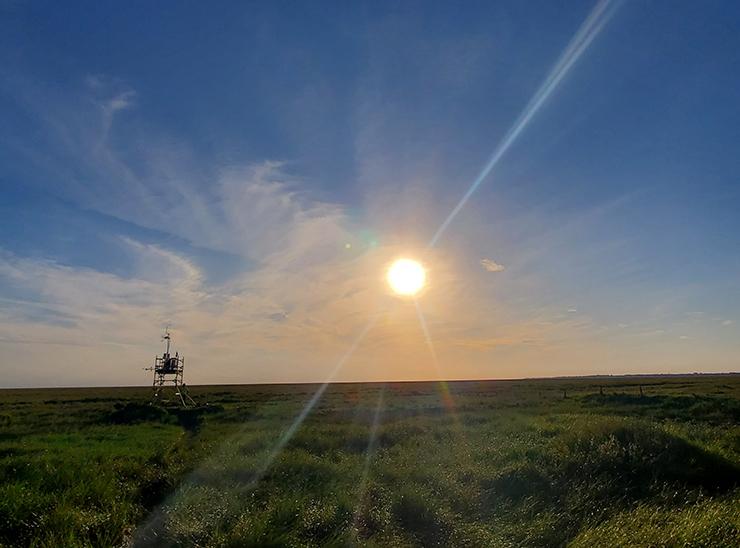The UK Centre for Ecology and Hydrology (UKCEH) has installed two flux systems in the Ribble Estuary to measure how much carbon dioxide gas is captured from the atmosphere and stored as carbon within the salt marsh ecosystem.
The flux systems will measure gas exchange between the land surface and the atmosphere. According to UKCEH, others will follow at Essex Marshes and The Wash in East Anglia over the coming months. The data gathered from the flux towers is intended to provide evidence to help unlock investment in restoration schemes of these important coastal wetlands.
The new flux systems are monitoring salt marshes that are in a natural state as well as areas under restoration, on both the east and west coasts of the UK, which have different tidal dynamics. This will provide data on the carbon sequestration potential of habitats in different environments, as well as information on how salt marshes respond to tidal and seasonal patterns.
The UK only has about 45,000ha of natural salt marsh remaining, holding a total of around 2.3 million metric tons of carbon in the top 10cm of their soil. However, so far, there has been relatively limited restoration, with the majority of schemes to date creating compensatory habitat for damage to designated sites due to development.
The organization reports that some 85% of UK salt marshes have been lost since the mid-19th century as land has been reclaimed from the sea for agriculture, development or coastal flood defenses; degraded through pollution; or eroded by rising sea levels. When the marsh destabilizes and sediment begins to erode, greenhouse gases that are produced within the soil can be released to the atmosphere at enhanced rates. In addition to improving biodiversity and providing natural flood protection, the plants covering the marshes draw down CO2 through photosynthesis and can also trap carbon-rich sediments in their roots and stems on the incoming tide.
 It is estimated that UK salt marshes accumulate between 3-14 metric tons of carbon dioxide equivalent (or CO2e) per hectare per year, depending on the condition of each site. However, there reportedly is a lack of data on how much greenhouse gas different types of UK salt marsh could remove from the atmosphere. UKCEH is therefore working with a range of partners including the Environment Agency, Defra, Natural England, World Wide Fund for Nature (WWF) and the Royal Society for the Protection of Birds (RSPB) to address this key knowledge gap.
It is estimated that UK salt marshes accumulate between 3-14 metric tons of carbon dioxide equivalent (or CO2e) per hectare per year, depending on the condition of each site. However, there reportedly is a lack of data on how much greenhouse gas different types of UK salt marsh could remove from the atmosphere. UKCEH is therefore working with a range of partners including the Environment Agency, Defra, Natural England, World Wide Fund for Nature (WWF) and the Royal Society for the Protection of Birds (RSPB) to address this key knowledge gap.
Annette Burden, wetland scientist at UKCEH, commented, “Our new monitoring will provide much-needed evidence on how much greenhouse gas is currently being absorbed from the atmosphere by UK salt marshes, and what could be removed if more sites were restored. This will then help pave the way for private investment in restoration projects through the voluntary carbon market. Restoring saltmarshes across the UK would support progress toward our net-zero targets and provide vital habitat for wildlife, including overwintering migratory birds and commercially important fish species such as seabass.”
Dr Ross Morrison, biometeorologist at UKCEH, added, “The new network of salt marsh flux towers fills an important gap in the wider UK-wide flux monitoring network. It will provide the evidence base for salt marsh that has been so important in raising the profile of terrestrial habitats as solutions for mitigating climate change and biodiversity loss. By the end of next year, we will be able to provide the first directly measured carbon budgets for a range of different salt marsh systems across the country and will have gained a much deeper scientific understanding of how these vital coastal ecosystems function now and into the future.”



